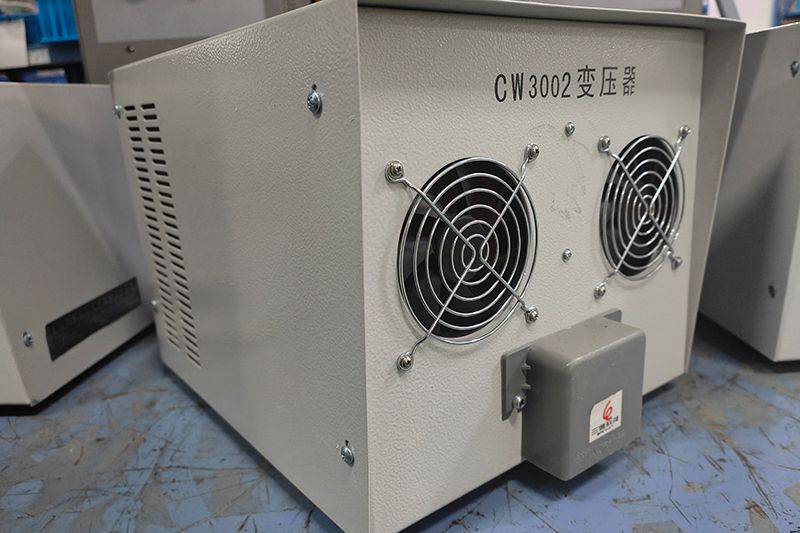The low-power corona generator has wide application in modifying the surface of plastic films. Our corona generator converts grid electricity into high-frequency, high-voltage electricity, which is then applied to specialized electrodes to create corona discharge. This process enhances the surface energy and improves adhesion. Our corona generator has high operating frequency, stable and reliable performance, and is easy to operate, making it suitable for low-power corona treatment.
| Model | CW3002H | CW3003H | CW3004 | CW3006 |
| Input Voltage, Frequency | AC220V 50Hz | AC220V 50Hz | AC380V 50Hz | AC380V 50Hz |
| Maximum Output Voltage | 15KV | 15KV | 15KV | 15KV |
| Maximum Input Power | 2kW | 3kW | 4kW | 6kW |
| Operating Frequency | 19kHz | 19kHz | 19kHz | 19kHz |
| Generator Dimensions (mm) | 475*180*325 | 475*180*325 | 300*380*800 | 300*380*800 |
| Transformer Dimensions (mm) | 300*270*250 | 320*200*350 | 300*350*300 | 300*350*300 |
| Weight (without discharge station) | 12kg | 12kg | 55kg | 60kg |
| Model | CW3002H |
| Input Voltage, Frequency | AC220V 50Hz |
| Maximum Output Voltage | 15KV |
| Maximum Input Power | 2kW |
| Operating Frequency | 19kHz |
| Generator Dimensions (mm) | 475*180*325 |
| Transformer Dimensions (mm) | 300*270*250 |
| Weight (without discharge station) | 12kg |
| Model | CW3003H |
| Input Voltage, Frequency | AC220V 50Hz |
| Maximum Output Voltage | 15KV |
| Maximum Input Power | 3kW |
| Operating Frequency | 19kHz |
| Generator Dimensions (mm) | 475*180*325 |
| Transformer Dimensions (mm) | 320*200*350 |
| Weight (without discharge station) | 12kg |
| Model | CW3004 |
| Input Voltage, Frequency | AC380V 50Hz |
| Maximum Output Voltage | 15KV |
| Maximum Input Power | 4kW |
| Operating Frequency | 19kHz |
| Generator Dimensions (mm) | 300*380*800 |
| Transformer Dimensions (mm) | 300*350*300 |
| Weight (without discharge station) | 55kg |
- The CW3002-3006 low-power corona generator uses a full-bridge inverter circuit (the CW3002H and CW3003H are half-bridge types). Our corona generator employs PWM pulse width modulation control, which makes the circuit simple. The IGBT modules, driver circuits, and major control units are all from reliable overseas suppliers, ensuring stable and reliable operation of the entire machine.
- Fixed operating frequency is set at 19kHz, eliminating the need for frequency tracking circuits.
- Some types of our treatment machines (CW3002H and CW3003H) adopt a hanging structure for convenient placement.
- Our corona generator is equipped with the function of delayed start to prevent current surges during high-power startup. This avoids pollution to the grid and potential damage to the main unit.
- Overcurrent protection is included in our corona generator to reduce the risk of damaging power devices (IGBTs) due to control or discharge electrode malfunctions. This minimizes repair costs.
- One of the features of our corona generator is temperature protection, which automatically shuts down the machine if the temperature of the machine exceeds the set level.
- There is an optional function in our corona generator, which protects the coating roller from its insulation layer being damaged by the electrical charge when the roller accidentally stops rotating. There is an an optional function of speed tracking capability in our corona generator, which automatically adjusts output power to maintain consistent corona treatment effects as the production line speed changes.








